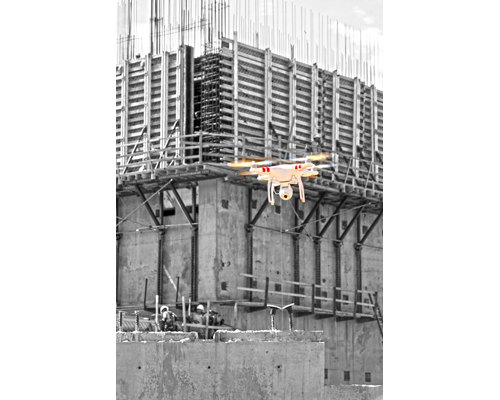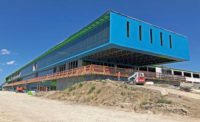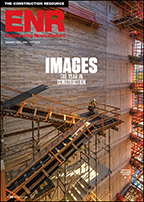
Image-making technology improves every year and ENR's annual The Year in Construction photo contest is one way to track how that improvement is contributing to improving the construction process, itself.
Less than a decade ago our judges started seeing images shot by the then-new GoPro camera. GoPro cameras are now becoming commonplace tools on jobsites and have made it possible not only to capture photo documentation easily, but even to capture inspection photos in difficult-to-reach areas with relative ease. Such photos can reduce risk and improve performance.
When the contest began in 2002, film and digital photos sent in by mail on CDs were submitted in about equal parts. We haven’t had a print or a CD submitted for several years, but now routinely get images submitted online from all over the world
This past year also marks the first winning photo taken by a smart phone—an iPhone 5s shot from Joshua Lyle. A smart phone photo almost made the cut two years ago, but the resolution was too low to print.
Post-production editing, such as the tungsten filter applied in Patrick Cashin’s photo on page 26 shows a new level of sensible post shooting manipulation that’s not only good for creative effect, but also for conveying important information
Digital image tweaking is now commonplace. In the last few years photos shot using High Dynamic Range (HDR) settings took such a role that the judges now caution contestants to not overuse the effect. HDR—a photographic technique that takes the same photo at multiple exposures simultaneously and layers them, produces photos with a greater dynamic range of luminosity. HDR settings are now available on most smart phones at the press of a finger. HDR is not just a nice effect for creativity sake, it also makes it possible to capture and convey detail across a much wider range of illumination in a single shot than would be possible without it. And the way photos are being used by contractors today, detail is important as data.
During the early-to-mid-2000’s digital cameras became more popular than analogue (film) cameras, as ENR’s contest reflects. Also, for convenience, photographic innovation moved closer to the site and into worker’s pockets. By the 2010’s nearly all smartphones came with integrated digital cameras. Tania Landauer’s shot (above) is the runner-up photo to depict a drone—another technology that is changing both the video and the construction industries.
Improvements in videography now infringe on film’s long-held status as the gold standard of excellence for movie production. In the past eight years, digital cameras have come to rival 35-mm film quality. Canon’s 5D Mark II camera, which many videographers claim has revolutionized the film industry, premiered in September 2008. Photographers turned videographers can now capture 1920x1080 high definition video with a sub $2,000 machine. Since then, digital single-lens reflex (DSLR) cameras from Canon and other leading camera makers, such as Nikon and Sony, are improving the technology year by year.
Construction is a beneficiary of the improved photo and video technology, which is supporting a new generation of site documentation and progress photo companies, such as Plangrid and EarthCam. With their tools, and others like them, construction site progress is documented moment by moment, from time-lapse photography to video.




Post a comment to this article
Report Abusive Comment